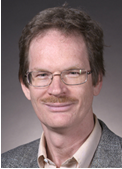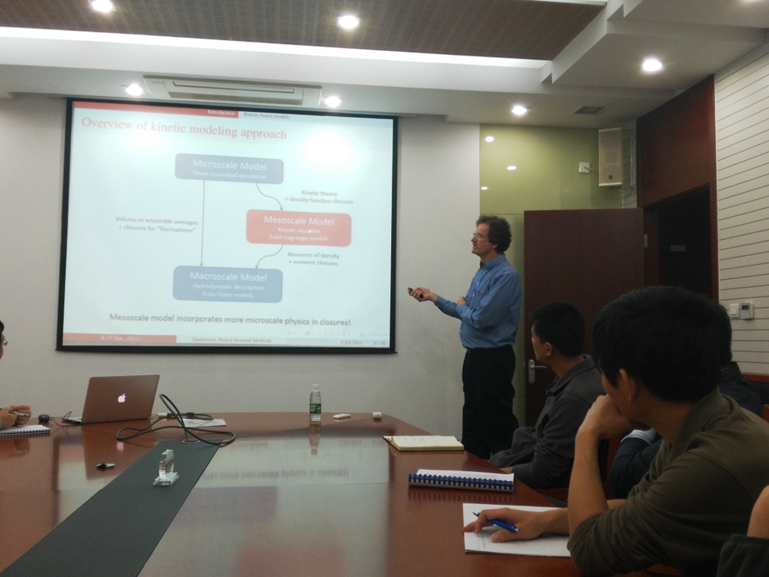Professor Rodney Fox from the Iowa State University, USA, visited the BICTAM and gave three seminars on modeling and simulation of two-phase turbulent flows from Oct. 16 to Oct. 26, 2015. This activity is sponsored by the BICTAM and organized by Professor Guo-Wei He from the State Key Laboratory of Nonlinear Mechanics, Institute of Mechanics. About 60 scholars and post-graduate students from universities such as Tsinghua University, Peking University and several institutes of the Chinese Academy of Sciences (CAS) such as Institute of Mechanics, Institute of Process Engineering, Technical Institute of Physics and Chemistry have attended the seminar.
 ProfessorFox is the Anson Marston Distinguished Professor at Iowa State University, which is an internationally well-known expert in modeling and simulation of two-phase turbulent flows. He has systematically developed the powerful quadrature-based moment methods (QBMM) for treating distribution functions (particle size, bubble size, etc.) required for CFD models of multiphase reactors.
ProfessorFox is the Anson Marston Distinguished Professor at Iowa State University, which is an internationally well-known expert in modeling and simulation of two-phase turbulent flows. He has systematically developed the powerful quadrature-based moment methods (QBMM) for treating distribution functions (particle size, bubble size, etc.) required for CFD models of multiphase reactors.
In this short-term seminar, Professor Fox gave three lectures about the newly developed two-phase turbulent model and its application in turbulent flows induced by clusters of particles under gravity and the quadrature-based moment methods, respectively.

Two-phase turbulent flows are a flow state at a high Reynolds number of a system consisting of discrete particles (e.g., solid particles, bubbles, droplets) and continuous carrier fluid. Two-phase turbulent flows have been frequently found in a wide range of applications such as environmental flows, energy transfer and chemical engineering. Due to the coupling between particles and fluid flow, a wider time and space scale separations exist in two-phase turbulent flows than in single-phase turbulent flows. The dimensions of flow parameter space for two-phase turbulent flows are also higher than those in single-phase turbulent flows. There are more challenges in modeling and simulation of two-phase turbulent flows.